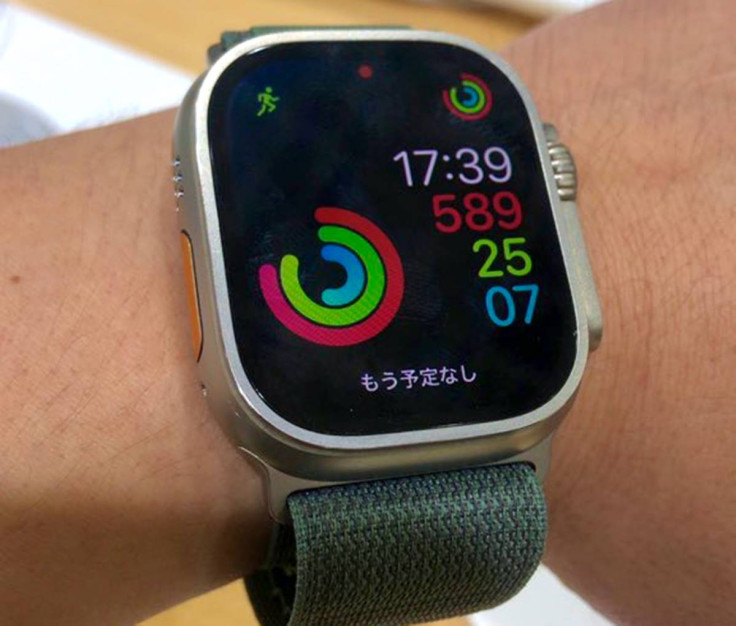Apple Watch can predict pain levels of those who have sickle cell disease
Researchers say that the Apple Watch is a feasible low-cost method that can be useful in the treatment of VOCs.

Wearables are increasingly becoming more popular as they can be used to monitor oxygen levels, calories burnt, heart rate, cholesterol levels, and other health metrics. A recently published study stated that Apple Watch could even predict the pain level of those who have sickle cell disease.
For the study, researchers collected data from patients admitted at Duke University's Day Hospital researchers between July and September 2021. Based on their findings, researchers discovered that Apple Watch, the wearable device from the iPhone manufacturer, can predict the pain levels of patients with Sickle Cell disease, 9TO5Mac reported.
Vaso-occlusive crises in Sickle Cell Disease
Sickle cell disease is caused by a mutation in the gene that is linked to the encoding of a subunit of hemoglobin. Those who suffer from the disease have hemoglobin shaped like a sickle, which makes it more difficult for blood to flow through the body.
There are a number of severe complications associated with sickle cell disease. These include chronic anemia, stroke, and vaso-occlusive crises (VOCs).
Vaso-occlusive crisis, also known as sickle cell crisis, is a common painful complication of sickle cell disease. VOCs are unpredictable, difficult to treat, and are the primary reason why people seek treatment. "Despite advances in pain management, physicians are often reluctant to give patients adequate dosages of narcotic analgesics because of concerns about addiction, tolerance, and side effects," the American Family Physician noted.
Apple Watch to predict pain levels in VOCs
Considering that pain management is an important part of VOCs, researchers have been looking for ways to treat pain better including the use of wearables. In the study, researchers use machine learning and Apple Watch data "help us better understand the pain experience and find trends to predict pain from VOCs."
Researchers approached patients with sickle cell disease and were admitted for a VOC at Duke University's Day Hospital to collect data for the study. Those who agreed to participate were given an Apple Watch Series 3 and collected data such as heart rate, heart rate variability (calculated), and calories.
Vital signs and pain scores were also collected from the electronic medical record. The data were combined and analysed using multiple machine learning models to determine trends that can predict pain from VOCs.
The researchers said that the Apple Watch is a feasible low-cost method that can be useful in the treatment of VOCs. "The strong performance of the model in all metrics validates feasibility and the ability to use data collected from a noninvasive device, the Apple Watch, to predict the pain scores during VOCs," the researchers said.
Apple Watch discovers blood clots
Earlier this month, an Apple Watch was able to predict a potentially lethal condition. A man who used the wearable to keep track of respiration rate, blood oxygen levels, and sleep received an alert notifying him of his elevated breathing. He later went to the hospital as an outpatient and was prescribed medication for bronchitis.
However, he later received a notification from his Apple Watch that his blood oxygen level was dropping. He went back to the hospital and discovered that both his lungs have blood clots. His Apple Watch saved his life as doctors told him he may not have woken up the following morning if he had not gone back to the hospital in time, according to TechTimes.
Global wearable market
The global wearable technology market, valued at USD 61.30 billion in 2022, is expected to grow at a compound annual growth rate (CAGR) of 14.6 percent from 2023 to 2030. According to Grand View Research, this growth will be powered by the increasing adoption of smart wearable technology products.
"These devices aid in monitoring health by keeping track of cholesterol levels, calories burnt, oxygen levels, etc., through sensors," the firm said. "In addition, several companies, such as Fitbit, Samsung, Noise, and Fossil Group, Inc., are introducing wearable technology watches and other accessories with health tracking solutions. Such a feature is anticipated to attract consumers as it helps them check their health, which paves the way for market growth."
© Copyright IBTimes 2025. All rights reserved.





















